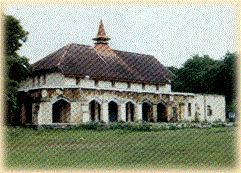The series of consultations, with a view to Church Union in North India, began in 1929. Eventually on the “basis of negotiations” prepared by a series of Round Table Conferences, a plan of Church union was drawn up. A negotiating committee was constituted in 1951 by the Church bodies concerned – which were the United Church of Northern India, the Church of India, Pakistan, Burma and Ceylon, the Methodist Church in Southern Asia and the Council of the Baptist Churches in Northern India. In 1957, the Church of the Brethren and the Disciples of Christ also joined in the negotiations. The plan reached its fourth and final edition in 1965 and, on that basis, the Church Union in North India was inaugurated on 29 November, 1970 in Nagpur. At the last moment, the Methodist Church in Southern Asia decided not to join the union. However, the Methodist Church, the British and the Australasian have joined the Union.
[/column] [column grid=”3″ offset=”0″]
The concern for unity of the Church grew out of a zeal for the mission of the Church, because a divided Church could not bear witness to the one Gospel and the one Lord in a country like India with diverse religions, languages, races and cultures. Through the process of negotiations and prayerful seeking of the guidance of Holy Spirit unity was achieved in the understanding and practice of the sacraments of Baptism and the Lord’s Supper, the three-fold ministry of Bishops, Presbyters and Deacons and in the organizational structures of Pastorates, Dioceses and the Synod, Episcopacy was received and accepted as both constitutional and historic. Provision has been made for diverse liturgical practices and understandings of the divine revelation, provided that these do not violate the basic Faith and Order of the Church or disrupt the unity and fellowship within the Church.
[/section]
